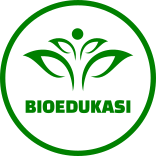Enhancing Creative Thinking And Communication Skills Through Engineering Design Process (EDP) Learning Model: A Case Study
DOI:
https://doi.org/10.19184/bioedu.v21i1.38022Keywords:
Engineering Design Process STEM Creative and Communication SkillsAbstract
The aim of this study is to determine the effect of the Engineering Design Process (EDP) learning model in improving 21st Century skills, students' creative thinking and communication skills on the subject of basic concept of genetics. Using a mixed-methods (qualitative and quantitative) approach, the authors aimed at identifying the effect of the EDP learning model implemented on Science Education undergraduate students, Manado State University. Our proposed learning model developed students’ creative thinking and communication skills in one class with 20 participants who enrolled in a course in General Biology I. Data collection techniques were used to assess creative thinking and communication skills, using written test data and observation data, respectively. The effectiveness of the EDP learning model is confirmed by calculating the average overall score of students' creative thinking assessment of 88,44% with an excellent category. Similarly, the results of student collaboration skills showed a score of 82,19% also with an excellent category. Based on these results, it was revealed that students' creative thinking and communication skills could be increased by using the EDP learning model.
Downloads
References
Akcanca, N. (2020). 21st Century Skills: The Predictive Role of Attitudes Regarding STEM Education and Problem-Based Learning. International Journal of Progressive Education. Vol. 16 (5). DOI: 10.29329/ijpe.2020.277.27
Atabey, N. & Topeu, M.S., (2021). The Relationship between Turkish Middle School Students’ 21st Century Skills and STEM Career Interest: Gender Effect. Journal of Education in Science, Environment and Health. Vol.7 (2). https://doi.org/10.21891/jeseh.739586
Cavanagh, T. M., Leeds, C., & Peters, J. M. (2019). Increasing Oral Communication Self-Efficacy Improves Oral Communication and General Academic Performance. Business Communication Article reuse guidelines: sagepub.com/journals-permissions DOI: 10.1177/2329490619853242
Choiriyah, I. N., Narulita, E., Chuseng, A., (2019). The effect of Problem Based Learning to Critical Thinking Ability of M1 Students in Plant Biotechnology Materials. Bioedukasi. Vol. XVII (1). Doi: https://doi.org/10.19184/bioedu.v17i1.13200
David S. Mandeville, Tiffanie K. Ho, Lindy A. Valdez. (2017). The effect of problem-based learning on undergraduate oral communication competency. Journal of Colledge Teaching & Learning. Vol. 14 (01). https://files.eric.ed.gov/fulltext/EJ1146606.pdf
Fattahillah, N. & Hariyadi, S., (2019). Implementation of Problem Based Learning with Electronic Media on Student Learning Outcomes in Indonesia’s – Philippines International Class. Bioedukasi. Vol. XVII (1). Doi: https://doi.org/10.19184/bioedu.v17i1.13202
Gok, B. & Surmeli H., (2022). The Effect of Scientific Toy Design Activities Based on the Engineering Design Process on Secondary School Students’ Scientific Creativity. Asian Journal of University Education (AJUE). Vol. 18 (2). https://doi.org/10.24191/ajue.v18i2.17987
Hakkinen, P., Jarvela, S., Makitalo-Siegl, K., Ahonen, A., Naykki, P., & Valtonen, T. (2017). Preparing teacher-students for twenty-first-century learning practices (PREP 21): A framework for enhancing collaborative problem-solving and strategic learning skills. Teachers and Teaching, 23(1), 25-41.
Lin, K.Y., et al. (2021). Effects of infusing the engineering design process into STEM project-based learning to develop preservice technology teachers’ engineering design thinking. International Journal of STEM Education. Vol. 8 (1). https://doi.org/10.1186/s40594-020-00258-9
Nurhayati, E., Riyan D. R., & Fatimah Z. (2020). The Correlation of Digital Literation and STEM Integration to Improve Indonesian Students’ Skills in 21st Century. International Journal Of Asian Education. Vol. 01 (2). https://doi.org/10.46966/ijae.v1i2.36.
Onur, Zehra., Ishak Kozikoglu. (2020). The Relationship between 21st Century Learning Skills and Educational Technology Competencies of Secondary School Students. Journal of Theoretical Educational Science. 13(1). 65-77. http://dx.doi.org/10.30831/akukeg.535491
Siew, N. M. (2017). Integrating STEM In An Engineering Design Process: The LEarning Experience Of Rural Secondary School Student In An Outreach Challenge Program. The Eurasia Proceeding of Educational & Social Sciences (EPESS). Doi:10.33225/jbse/16.15.477
Van Laar, E., Van Deursen, A. J., Van Dijk, J. A., & De Haan, J. (2017). The relation between 21st-century skills and digital skills: A systematic literature review. Computers in Human Behavior, 72, 577-588.
Widoyo, E.P. (2012). Research Instrument Preparation Techniques. Yogyakarta: Pustaka Pelajar.
Yusnaeni, Corebima, A. D., Susilo, H. & Zubaidah, S. (2017). Creative Thinking of Low Academic Student Undergoing Search Solve Create and Share Learning Integrated with Metacognitive Strategy. International Journal of Instruction. 10(2), 245-262. http://www.eiji.net/dosyalar/iji_2017_2_16.pdf
Zorluoglu, S. L., Yapucuoglu, M. D., Aladak, K. B. D., (2021). Change Of Teachers' Metaphors Towards Stem And 21st Century Skills with Stem Course. Malaysian Online Journal of Educational Sciences. Vol. 9(3). http://mojes.um.edu.my/ EISSN: 2289-3024






